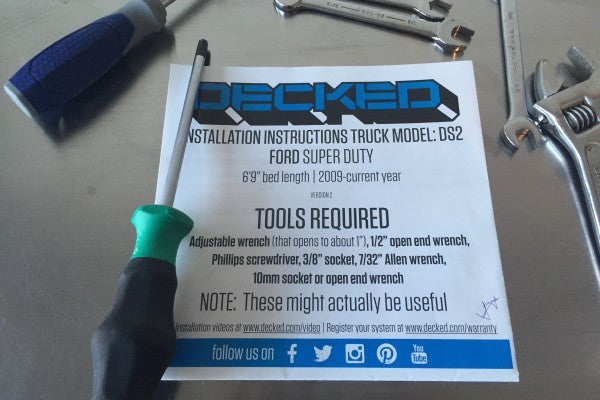The good Doctor (not pictured) lightens things up whenever possible. But never at the price of integrity. By: Dr. DECKED
One question that the good Dr. DECKED gets more than any other on a given day at the office is why the DECKED Storage System is constructed the way it is. So pay attention friends and I will tell you a short story… The Doctor first became aware of the term “payload” as a spry, young lad enthralled with all of the goings-on of the Space Program, which would, in the words of President Kennedy, “land a man on the moon and return him safely to Earth.” That lad came to understand that “payload” was not the rocket or the fuel required for the journey, but what the rocket carried in terms of people and deployable equipment, to complete its mission.
Turns out, the term “payload” is much, much older than the Good Doctor himself and the Space Program. Originally, the term was applied to that portion of the “load” that a transporting vehicle would carry, that produced “pay” to the operator. The less vehicle to be pulled by horses or horsepower, the greater the opportunity to carry more payload and receive more pay.
Whether you are going to Mars or just to the job site maximizing vehicle payload is critical. OK, so what does “payload” have to do with the lighter side of DECKED? The goal for the Good Doctor and his accomplices was to create a storage system that provided an improved means for organizing and accessing one’s gear, while minimizing the reduction in overall payload one could carry. In essence, the less added weight of the system, the more weight available for stowed gear up to the payload rating of one’s vehicle. Carrying around less “system weight” on a daily basis minimizes the impact to the fuel efficiency of the vehicle and the vehicle itself.
So how does one go about designing a lighter product? Well, the Doctor and his accomplices employed good engineering practice coupled with the latest in “state of the art” computer based design optimization tools to lighten things up. The design optimization software allowed the Doctor and his accomplices to explore numerous different materials, architectures and construction techniques in the product development process, to provide maximum payload capacity, while minimizing system weight. Truck owners are an especially observant group, and when something appears out of the ordinary, or less truck-like, it sometimes draws attention and passionate discourse.
DECKED uses HDPE an incredibly resilient plastic that is co-molded to a steel subframe. This result is a highly durable product which is light in weight, yet boasts a remarkable 2000 lb payload. The Doctor had long known that High Density Polyethylene (HDPE) was a rugged material. This was based on past projects where HDPE was applied to the design of industrial pallets, shipping containers, storage/fuel tanks and numerous other structural applications. In these applications, HDPE was desirable because of the following material characteristics:
- High Rigidity
- High Tensile Strength
- High Impact Resistance
- High Strength to Density Ratio
- Low Moisture Absorption
- Chemically Inert - making it highly resistant to interaction with fuel/oil/chemicals
- Retains high percentage of material properties in low temperature environments
- Lower cost than steel
These are all excellent characteristics for a system that will operate in the environment and duty cycle of a typical pickup truck or van, so HDPE it would be. But something else was needed. Analysis showed that HDPE alone would not provide the 2000 lb. load carrying capability that we had in mind for items that would be placed on top of our system. You know, items like a toolbox or compressors, welding equipment, lumber, landscape blocks, washers, dryers, furniture for Granny’s new apartment etc.
To increase the load carrying capacity of our deck system, the Doctor added co-molded galvanized steel tubes, oriented laterally within the HDPE deck panels. The steel tubes add significant strength and stiffness to our deck panel, while minimizing additional system weight. On the outboard side of our system, this integrated HDPE/steel deck panel rests on longitudinally oriented steel C channels that are attached/supported by HDPE corner supports that the Doctor refers to as ammo cans, with the deck panel subsequently bolted to the ammo cans.
In the center of our system, the deck panels rest on and are bolted to our center vertical support. This support structure provides the means to manage payloads up to 2000 lbs. on top of the deck and 200 lbs. in each of the drawers, all with a total system weight of 200 lbs. for the short system and 220 lbs. for the long system.
So, in summing things up, the Good Doctor would like to stress that the DECKED Storage System has been “fully engineered” to provide the best overall functionality, performance and durability at an affordable price, while minimizing impact to fuel efficiency and the truck owner’s ability to continue to use his truck as a truck








